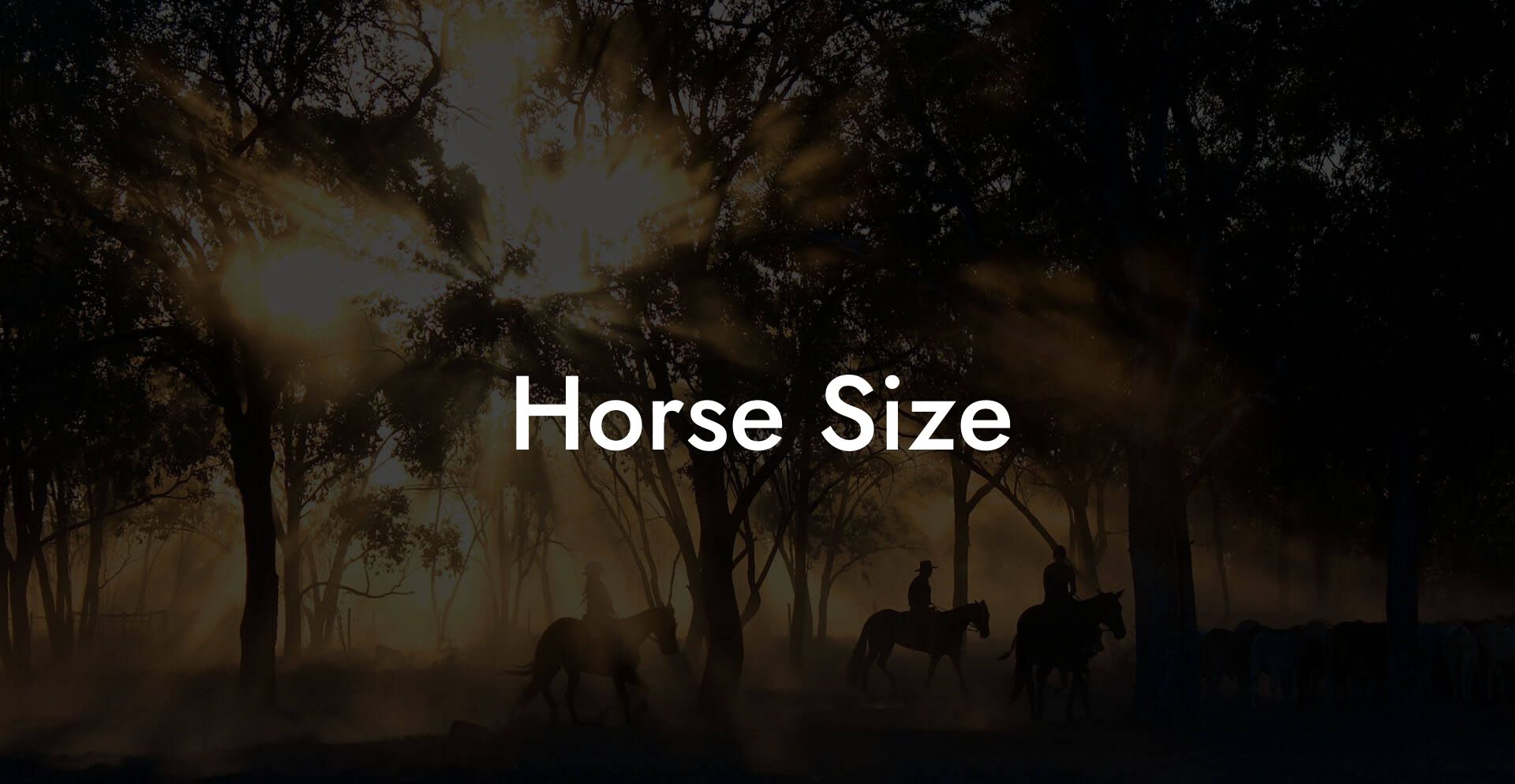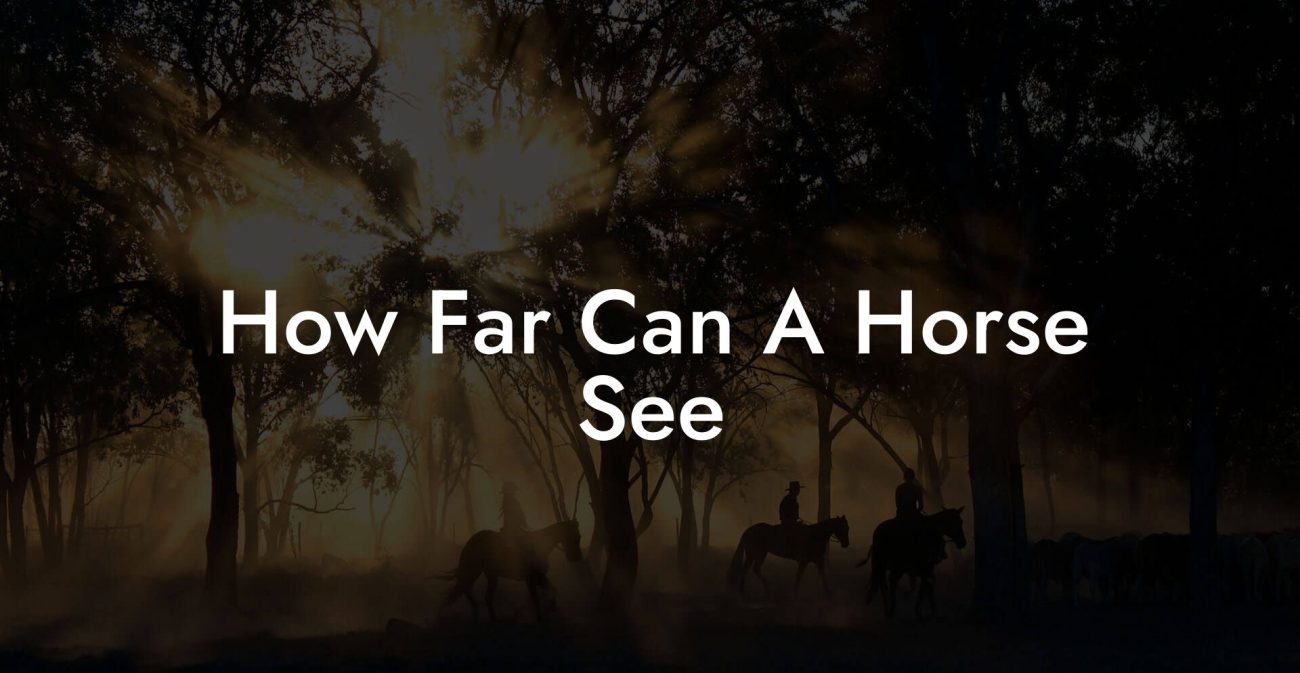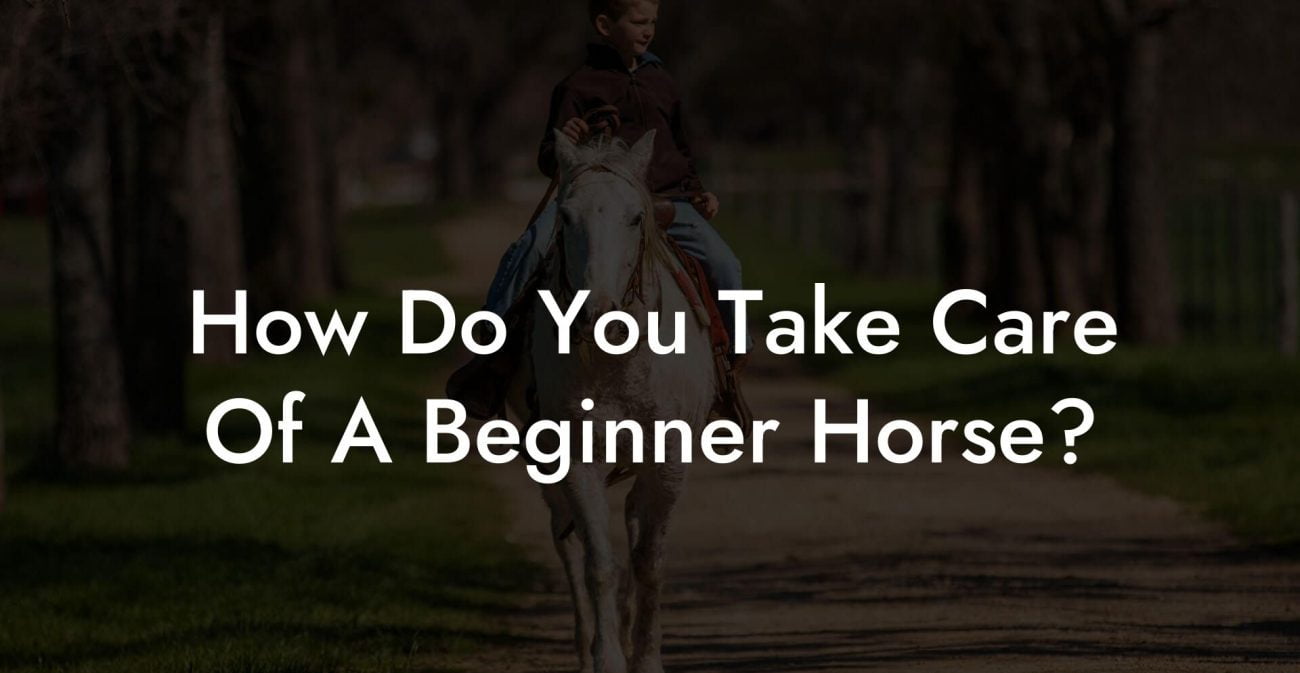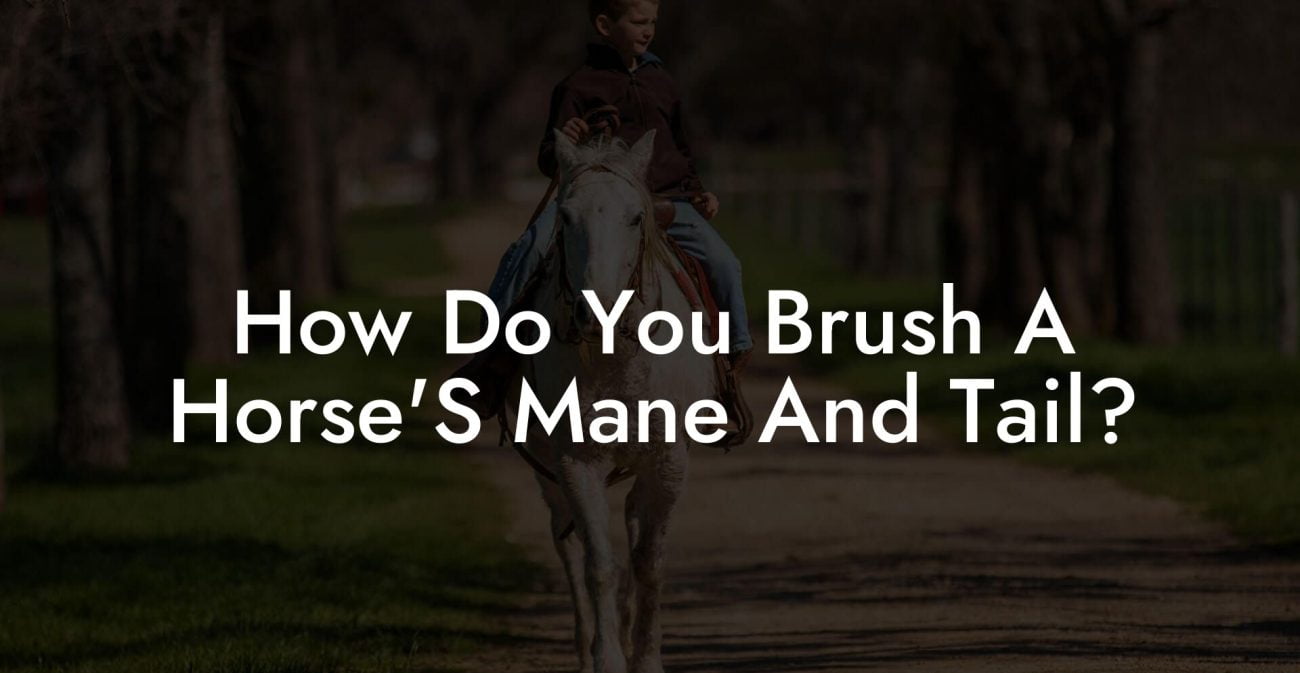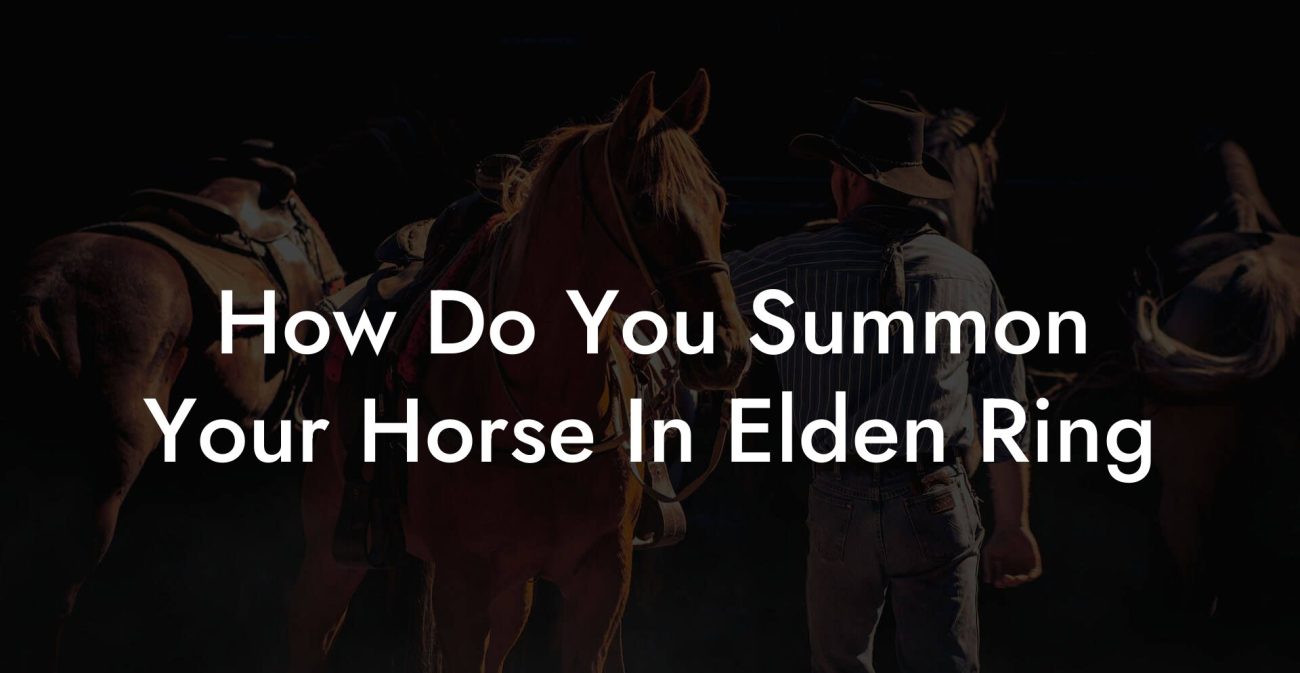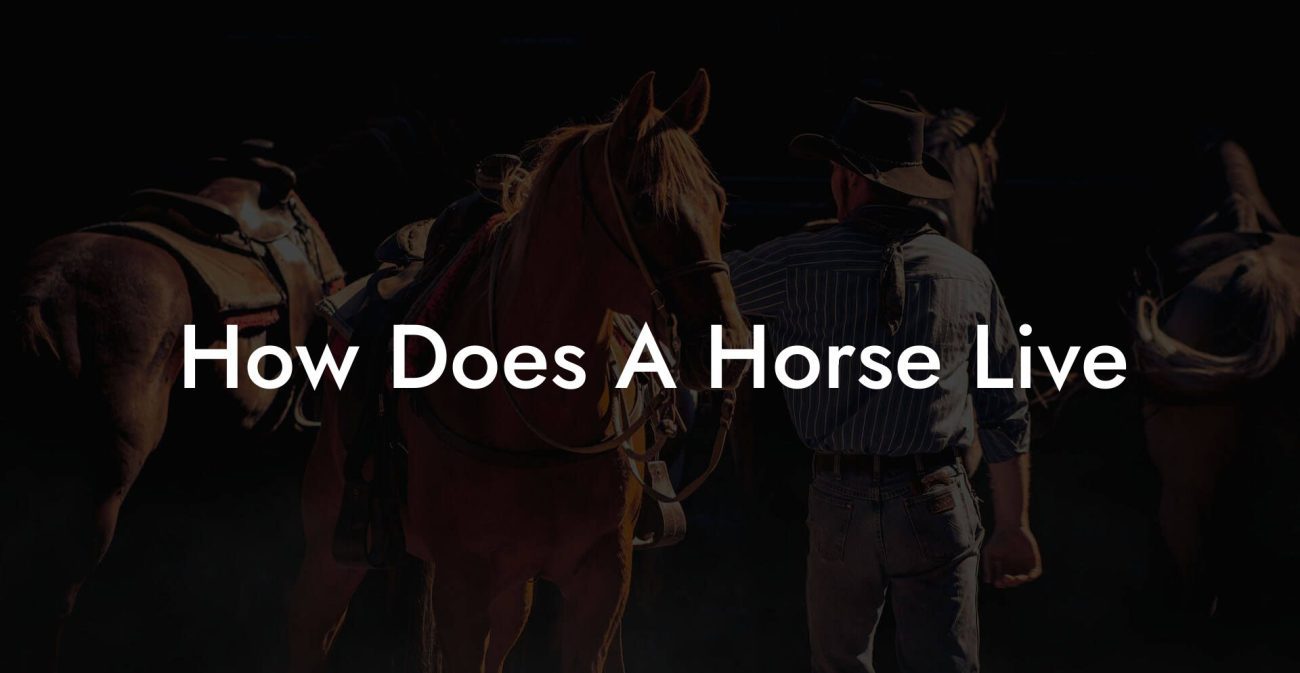Ever considered that a horse’s size is not just a number, it's a statement of character, a blueprint for care, and sometimes, the ultimate flex among equine enthusiasts? From the pint-sized ponies that trot with mischief in their eyes to the majestic giants that can make a grown person feel delightfully small, understanding horse size is your gateway to mastering the art and science of horse care. Buckle up, this is not your typical dusty academic lecture. We’re diving headfirst into the world of equine dimensions, blending hardcore facts, modern tech insights, and plenty of Gen-Z vibes to help you care for your horse like a pro.
Quick Links to Useful Sections
- Decoding Horse Size: More Than Just a Number
- What Does “Horse Size” Really Mean?
- How to Measure Horse Size: Tools and Techniques
- Height in Hands and Inches
- Weighing Your Horse
- Assessing Body Proportions
- Variations in Horse Size: From Miniatures to Mammoths
- Miniature Horses
- Pony-Sized Wonders
- Full-Sized Horses
- Draft Horses: The Gentle Giants
- Factors Influencing Horse Size
- Genetics
- nutrition
- Environment and Exercise
- Health and Medical Care
- Why Understanding Horse Size Is Crucial for Proper Care
- Matching Horse Size to Riding Disciplines and Training
- Lightweight and Agile: The Racing Thoroughbreds
- Versatile Companions: The Jumpers and Eventers
- Heavy-Duty Workhorses: The Draft and Carriage Horses
- Diet, Exercise, and Horse Size: Crafting a Tailored Routine
- Customizing Feed Plans
- Exercise Routines That Fit
- Technology to the Rescue
- Stable Management: How Horse Size Influences Space and Safety
- Space Requirements
- Safety Protocols
- Breed-Specific Considerations: Size and Its Role in Equine Identity
- Arabian Horses
- Quarter Horses
- Warmbloods and Sport Horses
- Clydesdales and Shires
- Integrating Technology: Modern Tools to Monitor Horse Size and Health
- Mobile Apps and Digital Tools
- Wearable Devices
- Online Communities and Data Sharing
- Case Studies: Equine Transformations Through Targeted Care
- Case Study 1: The Miniature Marvel’s Big Growth
- Case Study 2: From Underfed to Unstoppable, A Draft Horse Transformation
- Case Study 3: Bridging the Gap with Smart Stable Solutions
- Creating Your Personalized Horse Care Plan: Beyond the Numbers
- Step 1: Comprehensive Size and Health Assessment
- Step 2: Customized Nutrition and Feeding Regimen
- Step 3: Tailored Exercise and Training Schedules
- Step 4: Smart Stable and Environment Modifications
- Step 5: Regular Monitoring and Community Engagement
- Resources and Community Support: Your Next Steps in Equine Excellence
- FAQ: Your Burning Horse Size Questions Answered
- Your Path to Equine Excellence: Embrace the Size, Embrace the Journey
Decoding Horse Size: More Than Just a Number
When it comes to horses, size matters, but not in the way your high school gym teacher used to say. Whether you’re a seasoned equestrian or a curious newbie, knowing the ins and outs of horse size can transform the way you approach everything from stable management to daily walk routines. Horse size includes height, weight, and digital metrics that help assess overall health and performance.
In the wild, size can dictate a horse’s role in its herd, its nutritional needs, or even its speed on the open plains. In the human world, it guides everything from the selection of riding equipment to the design of stables. And let’s be real: nothing impresses your online followers quite like knowing your equine partner is a true heavyweight champion or an agile little speedster.
In this guide, we’ll break down the basics of measuring horse size, explore the many factors that contribute to those measurements, and offer actionable tips for tailored care. So, saddle up and get ready to reimagine horse care through the lens of modern technology and practical advice.
What Does “Horse Size” Really Mean?
The term “horse size” may seem straightforward, but it’s actually a multi-dimensional concept that includes:
- Height: Typically measured in hands (1 hand = 4 inches) in many parts of the world or in centimeters/inches in others. A horse’s height is crucial for determining the appropriate tack and riding style.
- Weight: Though trickier to measure accurately without a livestock scale, a horse’s weight plays a significant role in diet planning and medication dosages.
- Length and Proportions: The body length and overall proportions can impact a horse’s movement, balance, and comfort in various riding disciplines.
- Build and Conformation: These aspects help you understand if a horse is more suited for endurance, speed, or strength-based tasks.
Each of these elements contributes to the overall picture of your horse’s dimensions, helping you make informed decisions about everything from feed portions to the type of saddle that will keep your four-legged friend happy.
How to Measure Horse Size: Tools and Techniques
Measuring a horse isn’t as simple as grabbing a tape measure, although that can be part of it! Here are some of the most popular methods:
Height in Hands and Inches
Traditionally, horses are measured at the withers (the highest part of the back at the base of the neck). In many equestrian circles, you’ll hear terms like “14.3 hands” thrown around. If you're more comfortable with the metric system, converting these measurements into centimeters or inches is a handy trick.
Pro tip: When you’re measuring, make sure your horse is standing square on a flat surface. A wobbly stance can lead to wildly inaccurate measurements, and nobody wants that kind of math mishap.
Weighing Your Horse
Unlike measuring height, weighing a horse can be a bit more of a challenge. Livestock scales at barns or riding centers are the best option, but if that’s not available, you can use girth-based weight tapes. These tapes, while not perfect, offer an estimated weight by measuring the girth around the barrel of the horse.
Digital tools and mobile apps are now available too, integrated with smart stable systems, that help you record and monitor your horse’s weight over time. This is particularly useful for tracking diet and exercise regimes, ensuring your horse is in tip-top shape.
Assessing Body Proportions
Body proportions are the unsung heroes of equine care. A horse’s body shape can reveal a lot about its overall health and suitability for certain disciplines. Are those legs built for speed, or are they more like sturdy pillars meant for heavy-duty tasks? Understanding these proportions can help you choose the right exercises, diets, and even training routines.
Whether you’re using a digital blueprint or simply evaluating by eye, getting a grasp on a horse’s body conformation is crucial. Not to mention, it’s kind of fun to geek out on details like cannon bone circumference and wither depth when you’re trying to impress your friends or social media followers!
Variations in Horse Size: From Miniatures to Mammoths
Not all horses are created equal, and that’s what makes the world of equines so exciting. Here’s a quick look at the size spectrum:
Miniature Horses
Don’t let the name fool you, these little horses pack a ton of personality and charm into pint-sized frames. Typically standing less than 34 inches tall at the withers, miniature horses are beloved for their adorable and manageable size. However, their care requirements can be surprisingly similar to their larger counterparts, think diet, exercise, and social interaction.
Pony-Sized Wonders
Ponies, which generally measure between 34 and 14.2 hands, are known for their resilience and often feisty temperament. Their compact size makes them popular among younger riders and those who prefer a more durable companion. Ponies often have a thick coat, a robust build, and a surprising amount of strength for their stature.
Full-Sized Horses
Ranging from around 14.2 to 17 hands or more, full-sized horses are the ones that usually steal the limelight. These horses are typically seen in riding, racing, and working environments. With taller statures come larger appetites and more space requirements, so proper stable management is key.
Draft Horses: The Gentle Giants
When it comes to size and strength, draft horses are the titans of the equine world. Often exceeding 17 hands, these horses are built for heavy labor and pulling power. Despite their imposing presence, many draft horses are known for their gentle dispositions, making them the beloved retirees in many hobby farms.
Each size category comes with its unique set of challenges and joys, influencing everything from the type of saddle you use to the daily exercise routines that keep them in peak condition.
Factors Influencing Horse Size
The size of a horse is not merely a result of fate, it’s the outcome of a variety of factors that interplay in fascinating ways. Let’s break down what influences a horse’s dimensions:
Genetics
Genetics play a starring role in determining a horse’s size. Much like humans, a horse inherits traits from its parents, and selective breeding over generations can accentuate certain desirable dimensions. Whether you’re looking for a speedy thoroughbred or a robust draft, genetics are at the heart of it all.
nutrition
Think of nutrition as the fuel that powers your horse’s growth engine. A balanced diet, rich in essential vitamins and minerals, can help optimize bone growth and muscle development. On the flip side, poor nutrition can stunt growth or lead to health issues that compromise performance.
Environment and Exercise
A horse raised in an environment that allows for ample exercise and movement is likely to develop a more robust musculature and healthy bones. Whether it's a daily romp in the pasture or structured training sessions, regular physical activity helps shape a horse’s physique over time.
Health and Medical Care
Regular veterinary check-ups, vaccinations, and preventive care are all pivotal in ensuring your horse reaches its optimum size. A horse free of chronic ailments or nutritional deficiencies will naturally develop to its genetic potential.
Keeping these factors in balance is not just about achieving a number on a measuring stick, it’s about ensuring that every pony or stallion under your care thrives holistically. After all, a well-cared-for horse is a happy horse, and a happy horse makes for an even happier rider.
Why Understanding Horse Size Is Crucial for Proper Care
Knowing your horse’s size is essential for many reasons. Beyond the aesthetics of a perfectly proportioned companion, horse size informs every facet of its care:
- Proper Nutrition: Feeding your horse the right amount of calories and nutrients depends largely on its weight and height. A draft horse’s caloric needs differ greatly from those of a miniature, so tailoring the diet to size is critical.
- Equipment Fit: From saddles to bridles, getting gear that fits properly is non-negotiable. An ill-fitting saddle can cause discomfort or even injury, making regular size assessments a must.
- Safe Exercise Regimens: The type and intensity of exercise needed can vary based on a horse’s size and muscle composition. Whether you’re taking a full-sized horse on a joust-worthy gallop or guiding a small pony through gentle stretches, every routine should consider size.
- Stable and Pasture Planning: Larger horses generally require more space, both for safe movement and to prevent overcrowding. Size matters when planning the layout of your barn and pasture to ensure a stress-free environment.
- Health Monitoring: Subtle changes in weight or proportions can be early signs of potential health issues. Regular monitoring helps you catch issues before they escalate.
Ultimately, understanding horse size is about empowering you to provide personalized, precise care. It’s the secret ingredient in turning average horse management into an art form of dedication and insight.
Matching Horse Size to Riding Disciplines and Training
Not every horse is cut out for the same activities, and size plays a huge role in the kind of tasks they best perform. Let’s explore how horse size influences training and discipline:
Lightweight and Agile: The Racing Thoroughbreds
Racing horses are typically lean, athletic, and built for speed. Their streamlined form and lighter build allow them to reach incredible speeds on the track. The lightweight nature of these horses demands not only a high-energy diet but also specialized training that focuses on cardiovascular fitness and explosive power.
Versatile Companions: The Jumpers and Eventers
Eventing horses are the all-rounders of the equine world. They need a mix of agility, strength, and endurance to navigate obstacles, dressage, and cross-country challenges. For these versatile athletes, a harmonious blend of size, strength, and balance is crucial to perform under diverse circumstances.
Heavy-Duty Workhorses: The Draft and Carriage Horses
When it comes to heavy labor, bigger is often better. Draft horses and large carriage horses are built to haul substantial loads. Their massive frames require thoughtful training routines that focus on maintaining muscle health and managing joint stress. These gentle giants often have specialized needs when it comes to exercise and stable management.
Matching the right horse to its intended discipline involves understanding its body mechanics, nutritional needs, and even temperament. As you dive deeper into the world of training, you’ll discover that every stride, jump, and trot is influenced by the subtle dynamics of your horse’s unique size and build.
Diet, Exercise, and Horse Size: Crafting a Tailored Routine
A one-size-fits-all approach just won’t cut it when it comes to feeding and exercising a horse. Each horse’s unique size, breed, and metabolism require a customized plan. Here’s how to get it right:
Customizing Feed Plans
The amount of hay, grains, and supplements your horse needs is directly influenced by its size and activity level. Smaller horses typically require fewer calories than their larger counterparts, but that doesn’t mean you skimp on quality. Balance is key, ensure your horse’s diet is rich in essential nutrients, vitamins, and minerals. Advanced equine nutrition apps and consultations with equine nutritionists can provide precise feeding guidelines that translate into better health and performance.
Exercise Routines That Fit
A full-sized show jumper may need a dynamic mix of sprint drills, balance exercises, and steady long rides, while a miniature or pony might benefit more from low-impact activities and gentle stretches. Tailor exercise schedules based on the horse’s current weight, muscle development, and training goals. Regularly tweaking these routines ensures that your horse stays fit, agile, and free from injuries.
Technology to the Rescue
Thanks to modern tech, tracking your horse’s daily activity, weight changes, and even heart rate is easier than ever. Many stables now incorporate smart wearables designed specifically for equines. These devices sync with mobile apps, providing real-time data that help you make informed decisions about feed and exercise adjustments. In an era where data drives everything from fitness apps to social media trends, why should your horse miss out on the benefits of technology?
Investing time in creating a smart, size-sensitive regime will pay off in the long run. With the right diet and exercise plan, your horse isn’t just surviving, it’s thriving, all while keeping pace with the modern rhythm of wellness.
Stable Management: How Horse Size Influences Space and Safety
When it comes to building or managing a stable, knowing the dimensions of your horses guides every decision. A small pony may happily share a stall with peers, whereas a full-sized or draft horse might require more room to move and breathe without feeling cramped.
Space Requirements
Equine experts recommend tailoring stall and pasture sizes based on the size and temperament of your horse. Overcrowding can lead to stress and even injuries, so ensuring ample space is as essential as proper nutrition and exercise. In today’s era of modular stable designs, many innovative structures are now available that can be adapted to a horse’s unique size.
Safety Protocols
The risk of injuries or accidents can increase if a horse’s environment doesn’t match its size and movement patterns. For instance, a larger horse may require sturdy footing and lower levels of obstacles, while smaller ponies might benefit from secure fencing to prevent accidental escapes. Understanding horse size helps in designing safe, horse-friendly spaces that prevent injuries and promote overall well-being.
Incorporating smart technology, such as sensor-equipped stalls that monitor temperature, humidity, and even movement, adds an extra layer of safety tailored to your horse’s needs. In a high-tech age, ensuring safety through innovation is not only practical but also appealing to millennial and Gen-Z caretakers.
Breed-Specific Considerations: Size and Its Role in Equine Identity
Every breed carries its own story, a legacy passed down through generations that defines its size, temperament, and overall character. Understanding these nuances is crucial:
Arabian Horses
Known for their refined, elegant build, Arabian horses are often medium in size but boast incredible stamina and endurance. Their slightly smaller stature belies the power that comes from generations of selective breeding, making them perfect for long-distance rides.
Quarter Horses
America’s favorite workhorse, the Quarter Horse, typically sports a muscular, compact body ideal for short, fast bursts of speed. Their size makes them versatile, adept at racing, ranch work, and even competitive rodeo events.
Warmbloods and Sport Horses
Often seen in dressage and show jumping, Warmbloods are prized for their balanced conformation and athleticism. Their moderate size combined with muscular strength allows for precise, high-level performance in competitive sports.
Clydesdales and Shires
Representing the draft categories, these gentle giants are the epitome of strength meeting grace. Their impressive size requires specialized care, but their calm demeanor and work ethic make them beloved partners in both farming and parade circuits.
Recognizing breed-specific size attributes not only deepens your appreciation for your horse but also informs your everyday decisions in feeding, training, and healthcare.
Integrating Technology: Modern Tools to Monitor Horse Size and Health
Gone are the days of relying solely on manual measurements and guesswork. Today’s equine care scene boasts a host of modern solutions designed to simplify monitoring horse size:
Mobile Apps and Digital Tools
From weight-tracking apps to digital measuring tapes, technology is at your fingertips. These apps allow you to record, store, and analyze your horse’s measurements over time, ensuring you catch any subtle changes early on. Sharing these insights on social media not only boosts your equestrian cred but also inspires fellow enthusiasts.
Wearable Devices
Specially designed equine wearables can monitor heart rate, activity levels, and even track sleep patterns while your horse is resting. Sync these devices with a smartphone app and you have a full picture of your horse’s daily life, providing invaluable information to adjust nutrition, exercise, and even stable conditions.
Online Communities and Data Sharing
The digital age has democratized equine data. Many platforms allow you to compare your horse’s size and health metrics with others in your breed or discipline. By participating in online forums and community groups, you can easily share tips, get advice, and stay updated with trending care practices.
Embracing these technological advances ensures that your horse is not just cared for, it's monitored with precision and proactivity. In today’s tech-savvy world, data-driven care practices are a must-have amidst the fast-paced lifestyles of Gen-Z and millennial equestrians.
Case Studies: Equine Transformations Through Targeted Care
Let’s put theories into practice with some real-world case studies that illustrate why treating horse size as a core component of care can yield transformative results:
Case Study 1: The Miniature Marvel’s Big Growth
Bella was a miniature horse, standing at just 32 inches at the withers, whose enthusiastic spirit far outweighed her small frame. Her owner, a creative Gen-Z rider, leveraged mobile apps to monitor Bella’s weight and nutrition closely. By tailoring her diet with nutrient-dense supplements and creating a fun, interactive exercise routine, Bella experienced a steady, healthy growth spurt. Today, she not only outshines many of her pony peers in agility and charm but also serves as a viral sensation on social media for her vibrant energy.
Case Study 2: From Underfed to Unstoppable, A Draft Horse Transformation
Max, a robust draft horse nearing 18 hands, was facing weight management issues and subpar stamina. His caretaker noticed that Max’s enormous appetite wasn’t matched by a balanced diet. Through the integration of digital weighing devices and nutrition consultations, adjustments were made to his feeding program, along with a customized exercise plan that included both low-impact movements and occasional sprint drills. Max’s transformation was remarkable, within months, he not only attained an ideal weight for his size but his energy levels soared, making him a reliable workhorse and a beloved community icon.
Case Study 3: Bridging the Gap with Smart Stable Solutions
Luna, a moderately sized Warmblood, was notorious for her unpredictable behavior, partly due to a cramped and unsuitable stable environment. Her owner revamped the stable using modern sensor technology that monitored environmental conditions in real time. With data-driven insights, Luna’s stall was modified for better airflow and ample space, significantly reducing her stress levels. Added to this, a tailored exercise regime and technology-backed nutrition monitoring helped Luna maintain a consistent, healthy size. The result? A calmer, more balanced horse that exemplified how technology can play a pivotal role in equine wellbeing.
These case studies underscore the importance of a dynamic, informed, and proactive approach to equine care. Whatever the size of your equine friend, from a dainty pony to an awe-inspiring draft horse, the right blend of nutrition, exercise, and environment can transform not just their physical dimensions but their quality of life.
Creating Your Personalized Horse Care Plan: Beyond the Numbers
Now that we’ve unraveled the complexities of horse size, it’s time to turn theory into action. A bespoke horse care plan that considers size is the cornerstone of consistent and proactive equine health management. Here’s how you can craft one:
Step 1: Comprehensive Size and Health Assessment
Begin with an in-depth assessment of your horse’s height, weight, and body proportions. Use both traditional measures and digital tools to track growth over time. Enlist the help of a vet or an equine nutritionist to set a baseline for healthy metrics.
Step 2: Customized Nutrition and Feeding Regimen
Work with experts to develop a diet that considers your horse’s unique size and energy demands. Include balanced proportions of hay, grains, supplements, and plenty of fresh water. Periodically review and adjust portions as your horse grows and its activity levels change.
Step 3: Tailored Exercise and Training Schedules
Based on your horse’s size and breed, design exercise routines that complement their physical structure. Mix in activities ranging from light stretching to more rigorous training sessions, keeping in mind the specific disciplines they excel in, be it racing, jumping, or even leisurely trail rides.
Step 4: Smart Stable and Environment Modifications
A stable that adapts to your horse’s needs can enhance its overall wellbeing. Utilize modern sensor technologies and data-driven insights to optimize space, lighting, and ventilation. Consider how the stable layout aligns with your horse’s size, ensuring both safety and comfort.
Step 5: Regular Monitoring and Community Engagement
Finally, keep a close eye on your horse’s progress. Use apps and wearable devices to monitor daily changes, and share your journey in online equestrian forums or local community groups. Regularly consult with veterinary professionals to tweak and update your horse care plan based on performance and environmental factors.
A personalized plan is a living document, one that evolves as your horse ages, its environment changes, or new technologies emerge. With these steps, you’re not just caring for a horse; you’re curating an exceptional ecosystem for your equine companion, underpinned by science, heart, and a healthy dose of modern flair.
Resources and Community Support: Your Next Steps in Equine Excellence
Embarking on the journey of effective horse care doesn’t happen in isolation. Whether you’re a millennial rider juggling a busy digital life or a Gen-Z enthusiast who values community insights, tapping into resources is crucial.
Explore online platforms like equine forums, social media groups, and specialized apps that track horse health metrics. Local equestrian centers, veterinary outreach programs, and community-supported agriculture (CSA) initiatives can offer invaluable hands-on advice. These communities not only provide technical insights but also share inspiring stories of transformation, turning everyday horse care into a journey of continuous learning and growth.
With the right network behind you, be it through Zoom webinars, Instagram live chats, or in-person meetups, support is always just a click away. Embrace the confluence of technology and tradition, and transform your equine experience with a community that’s as passionate as you are about mastering the art of horse care.
FAQ: Your Burning Horse Size Questions Answered
Dive into these frequently asked questions that help demystify the complexities of horse size, health, and care:
1. What exactly is meant by “horse size”?
Horse size refers to a combination of measurements including height (commonly measured in hands or inches), weight, body length, and overall conformation. These metrics inform many aspects of horse care, from nutrition to equipment fitting.
2. How can I accurately measure my horse’s height?
The most accurate method is by measuring at the withers using a specialized measuring stick or tape. For a more detailed analysis, some riders use digital tools that capture the measurement and log it for future comparisons.
3. Do different horse breeds have significantly different size requirements?
Absolutely. Breeds like Arabians, Quarter Horses, and Draft breeds have distinct size ranges and care needs. Understanding these differences helps tailor your care routines, nutrition, and training to suit their unique physiques.
4. What role does technology play in monitoring horse size?
Modern technology, including mobile apps, wearable devices, and sensor-equipped stables, enables real-time monitoring of a horse’s growth, weight, and activity. These tools help in making data-driven decisions about feed, exercise, and overall health.
5. Can changes in a horse’s size affect its performance?
Yes, significant changes, whether in weight or muscle mass, can impact performance in riding, racing, or work scenarios. Regular assessments help ensure that any changes are addressed early, optimizing health and performance.
6. How important is proper stable sizing relative to horse size?
Proper stable sizing is critical. A stable that’s too cramped can lead to stress and possible injuries. Tailoring space according to size ensures comfort, reduces risk, and promotes a stress-free environment.
7. What dietary adjustments should be made based on horse size?
Larger horses generally require more calories and nutrients, while smaller ponies need a controlled, nutrient-dense diet to prevent obesity. Consulting with an equine nutritionist can help create a diet plan that considers your horse’s specific size, age, and activity level.
8. Are smart wearables and apps reliable for monitoring horse size?
Yes, while no technology is perfect, many smart devices offer reliable data that can be cross-checked with regular professional evaluations. They serve as an excellent supplement to traditional monitoring methods.
Your Path to Equine Excellence: Embrace the Size, Embrace the Journey
Understanding horse size is more than crunching numbers, it’s about unlocking the essence of your equine friend’s identity, optimizing care, and sharing a journey of growth and wellbeing together. When you appreciate the nuances of what makes each horse unique, you’re not just maintaining a routine; you’re curating an environment where your partner can truly flourish.
Whether you’re adjusting routines based on digital insights, tailoring diets to specific body types, or reimagining stable spaces to align with your horse’s dimensions, every step is a manifestation of care, passion, and modern innovation. It’s a journey that celebrates the beauty of diversity in the equine world, a world where every hand, inch, or measurement is a story waiting to be told.
So, dive into the details, embrace the metrics, and transform your approach to horse care into a vibrant mix of science, creativity, and heartfelt dedication. Your journey to providing next-level equine care starts with understanding size, and with that knowledge, every ride, every gallop, and every quiet moment becomes an opportunity for excellence.
Remember, the key to success lies not in a one-size-fits-all solution but in a personalized, thoughtful fusion of tradition and technology. With insights, community backing, and modern tools at your fingertips, you’re set to lead your horse, and your equestrian journey, into a future that truly measures up.

